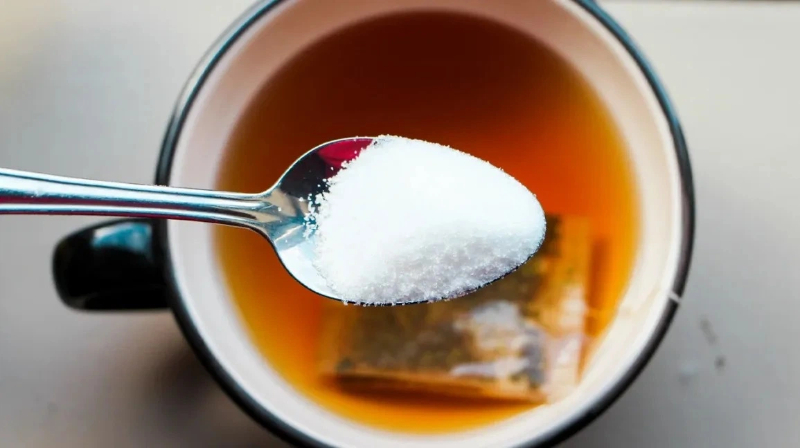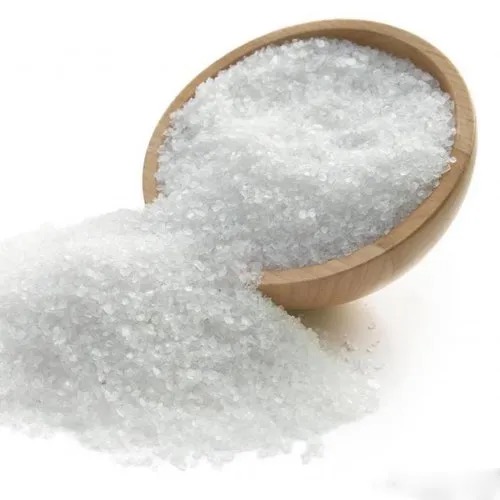







Content Menu
● Applications in Food and Beverage
● Regulatory Landscape and Safety
● Formulation Strategies and Sensory Optimization
● Quality and Manufacturing Considerations for OEM/ODM Partners
● Technical Considerations for Process Engineers
● Sorcery of Taste: Understanding Perception and Consumer Communication
● Case Studies and Practical Examples
● Operational and Strategic Considerations for Your Factory
● Future Outlook and Innovation Pathways
● FAQ
>> 1. What is Surcalose and how does it differ from table sugar?
>> 2. Is Surcalose safe for consumption?
>> 3. In what products is Surcalose commonly used?
>> 4. How should Surcalose be incorporated into formulations?
>> 5. What should overseas manufacturers consider when sourcing Surcalose?
Surcalose is a highly concentrated, zero-calorie sweetener derived from the chemical modification of sucrose. It delivers sweetness far exceeding that of sugar with minimal caloric contribution, making it a cornerstone ingredient for reduced-sugar and sugar-free formulations across beverages, foods, and health-focused products. This article provides a comprehensive overview of Surcalose, including its chemistry, production, applications, regulatory landscape, formulation strategies, and practical considerations for manufacturers and contract manufacturers (OEM/ODM).

Surcalose is a discretely chlorinated derivative of sucrose that neutralizes almost all of the sweetness of table sugar while retaining a sugar-like taste profile. The molecule's structural changes prevent human metabolism from extracting calories in the same way as sucrose, enabling products to achieve high-intensity sweetness with minimal energy contribution. For global food developers, Surcalose offers a reliable, heat-stable sweetness source compatible with diverse product categories and processing environments. Its potency makes it ideal for blending with other sweeteners to tailor taste, aftertaste, and texture without compromising overall formulation integrity.
Surcalose production begins with sucrose and involves selective chlorination at specific hydroxyl sites, followed by a series of protection/deprotection steps that yield a highly pure, heat-stable sweetener. The final product is crystallized, dried, milled, and subjected to rigorous quality controls to ensure consistent purity and performance. The chemistry behind Surcalose is the key to its unique sweetness profile: three hydroxyl groups are replaced by chlorine atoms, creating a molecule that interacts with taste receptors differently than sugar yet remains resistant to enzymatic breakdown in the human body. This chemical design underpins Surcalose's stability in both acidic and alkaline environments and its compatibility with a broad range of flavors and ingredients.
- Purity and quality control: Industry-standard purity levels for dietary-use Surcalose are achieved through multi-step purification, adsorption, and carbon treatment, ensuring minimal impurities that could affect taste or regulatory compliance.
- Processing stability: Surcalose demonstrates robust heat and pH stability, supporting production processes from pasteurization in beverages to baking in breads and desserts.
- Regulatory awareness: Given its synthetic origin, Surcalose must be processed and labeled in compliance with regional food safety regulations, including permissible usage levels and consumer labeling requirements.
Surcalose is widely used across multiple product categories due to its high sweetness intensity, clean profile, and stability under processing conditions.
- Beverages: Soft drinks, energy drinks, ready-to-drink teas and coffees, flavored waters, and functional beverages harness Surcalose to achieve sugar-like sweetness without added calories. Its stability under thermal processing supports hot-fill and pasteurization steps common in beverage production.
- Bakery and confectionery: Cookies, cakes, pastries, puddings, frozen desserts, and chocolate products benefit from Surcalose's ability to mimic sugar sweetness while enabling reduced-calorie formulations. In many cases, Surcalose is blended with bulking agents to replicate sugar's mouthfeel and texture.
- Dairy and dairy alternatives: Yogurts, flavored milks, and plant-based dairy analogs leverage Surcalose for sweetness without increasing total caloric load, helping products align with health- and wellness-oriented claims.
- Snacks and other formulations: Chews, mouth-refreshing tablets, and snack bars use Surcalose to manage sweetness intensity and consumer acceptability while maintaining label cleanliness.
- Clean-label and health-focused products: Surcalose can support "no added sugar" or "reduced sugar" claims when used in appropriate dosages and in combination with other natural or functional ingredients.
- Global stance: Regulatory bodies recognize Surcalose as a safe sweetener when used within established acceptable daily intake (ADI) limits. Compliance with local regulations is critical when marketing in overseas regions.
- Labeling considerations: Product labeling should reflect Surcalose as a sweetener, in accordance with regional labeling rules. Clear consumer communication helps address questions about caloric contribution and safety.
- Long-term safety monitoring: Ongoing toxicology and epidemiological studies support continued use of Surcalose within regulatory boundaries, with manufacturers maintaining rigorous QA/QC practices to ensure product safety and consistency.

- Blending with other sweeteners: Surcalose is frequently blended with polyols and other high-intensity sweeteners to fine-tune sweetness, reduce aftertaste, and improve mouthfeel. The synergistic effects can yield more balanced sensory profiles across various matrices.
- Texture and body: In baked goods and dairy products, Surcalose often requires bulking agents or texture-enhancing components to mimic the bulk and mouthfeel provided by sugar, ensuring consumer satisfaction in reduced-calorie products.
- Flavor interactions: Careful pairing with flavors and aroma compounds is essential to prevent off-notes and ensure a clean sweetness that supports the product's overall flavor profile.
- Stability and shelf-life: Formulators should consider potential interactions with acidic flavors, fats, and proteins over time. Comprehensive accelerated stability studies help predict long-term performance.
- Specification alignment: Suppliers and contract manufacturers should align on purity grades suitable for dietary use, maximum impurity thresholds, and compliance with relevant food-contact regulations.
- Documentation and traceability: Detailed technical dossiers, certificates of analysis, and batch traceability are essential for regulatory reviews in international markets and for maintaining brand integrity.
- Supply continuity: For overseas manufacturers, establishing reliable supply chains for Surcalose and compatible blending/sweetener systems is critical to meet production schedules and contract obligations.
- Regulatory intelligence: Keeping abreast of evolving regulatory interpretations, labeling norms, and permitted usage levels in target markets helps prevent non-compliance and supports faster product launches.
- Process control: Chlorination steps, purification stages, and crystallization conditions require tight process control to guarantee batch-to-batch consistency.
- Scale-up challenges: Transitioning from laboratory or pilot-scale production to commercial-scale plants involves managing heat transfer, mass transfer, and reaction kinetics to maintain purity and yield.
- Quality assurance: In-line analytical methods and post-production testing (e.g., chromatography, mass spectrometry, moisture analysis) underpin product quality and regulatory compliance.
- Perceptual masking: Surcalose's sweetness can be perceived as intensely sweet with subtle aftertaste depending on matrix and dosage. Blending strategies help modulate aftertaste and ensure broad consumer acceptance.
- Health narratives: Clear communication around zero-calorie attributes and suitability for various diet plans (e.g., low-sugar, keto-friendly) supports marketing claims, provided labeling adheres to local regulations.
- Consumer education: Education about Surcalose's role as a non-caloric sweetener can address consumer questions about safety and metabolism, particularly in markets with strong interest in "natural" or "low-carb" products.
Sourcing and Collaboration for Overseas Manufacturers
- Supplier selection: Choosing trusted suppliers with robust QA systems helps ensure high-purity Surcalose suitable for dietary applications and OEM/ODM projects.
- Co-development opportunities: OEM/ODM collaboration enables tailored sweetness profiles, texture considerations, and package formats aligned with target markets and consumer preferences.
- Intellectual property considerations: When developing exclusive blends or branded formulations, clarity around IP rights and confidentiality is essential to protect both parties' interests.
- Beverages: A reduced-sugar tea beverage uses Surcalose to achieve target sweetness while maintaining a clean label. The formulation blends Surcalose with a small amount of a bulking agent to simulate the viscosity of sugar-containing beverages.
- Bakery: A sugar-reduced cake formula relies on Surcalose for sweetness, complemented by hydrocolloids to preserve crumb structure and moisture. The final product achieves similar sensory properties to full-sugar versions while delivering caloric reductions.
- Dairy: A low-sugar yogurt uses Surcalose to deliver familiar sweetness with improved caloric profile, while stabilizers and cultures maintain texture and mouthfeel.
- Silky confectionery: Surcalose headliners with clean sweetness in a sugar-free confection, supported by flavor masking agents to minimize any residual aftertaste.
- Alignment with core capabilities: Your facility's expertise in natural sweeteners, functional polyols, and dietary fibers positions Surcalose as a complementary component in blended-sweetener systems and OEM/ODM offerings.
- Global market readiness: Preparing technical dossiers, regulatory mappings, and market-ready formulations helps overseas manufacturers respond quickly to opportunities in regions like North America, Europe, and Asia.
- Customization and scalability: Your ability to develop blended-sweetener solutions, tablet formulations, and other dosage forms can be extended to Surcalose-based products, enabling end-to-end solutions for foreign manufacturers.
- Product diversification: Integrating Surcalose into new product categories, such as plant-based desserts or fortified beverages, broadens your product portfolio and meets evolving consumer demands.
- Regulatory evolution: As regulatory frameworks evolve, maintaining proactive compliance strategies will help ensure long-term market access and reduce time-to-market for new formulations.
- Sustainability considerations: Emphasizing responsible sourcing, efficient production, and transparent labeling aligns with growing emphasis on sustainability in the food and health-ingredient industries.
Surcalose plays a pivotal role in modern reduced-sugar and no-added-sugar formulations, delivering high-intensity sweetness with minimal calories and robust processing versatility. For health-focused manufacturers and OEM/ODM partners, Surcalose enables the creation of appealing, compliant, and scalable products that meet global consumer expectations for taste, safety, and transparency. By integrating Surcalose into tailored blend systems and leveraging the strengths of overseas manufacturing collaborations, suppliers can deliver innovative, market-ready solutions that support healthier dietary choices without compromising sensory quality.

Surcalose is a zero-calorie sweetener created by chlorinating sucrose, resulting in intense sweetness with minimal energy contribution. Unlike table sugar, Surcalose is not metabolized into calories in the same way, enabling sugar-like sweetness without corresponding energy.
Regulatory bodies in many regions recognize Surcalose as safe when used within established intake limits. Ongoing studies and post-market surveillance support its continued use, with manufacturers maintaining rigorous QA/QC practices to ensure safety.
Surcalose is commonly used in beverages, baked goods, yogurts, confections, ice creams, and other foods seeking reduced-sugar profiles without compromising sweetness.
Begin with low dosages and adjust gradually to achieve the target sweetness and mouthfeel. Consider blends with polyols or other sweeteners to balance taste and reduce aftertaste.
Ensure high-purity dietary-grade Surcalose, verify regulatory approvals in target markets, and establish robust supply chains and documentation to support OEM/ODM projects.
[1](https://patents.google.com/patent/US7932380B2/en)
[2](https://easybuyingredients.com/blog/sucralose-production-demystified-from-raw-materials-to-manufacturing-process/)
[3](https://www.nbinno.com/article/sweeteners/the-manufacturing-process-of-sucralose-ensuring-quality-and-purity)
[4](https://processengr.com/project/sucralose-sweetener-manufacturing-plant-preliminary-process-design/)
[5](https://www.sciencedirect.com/topics/food-science/sucralose)
[6](https://ific.org/insights/everything-you-need-to-know-about-sucralose/)
[7](https://en.wikipedia.org/wiki/Sucralose)
[8](https://pubs.acs.org/doi/10.1021/acs.jchemed.8b00413)
